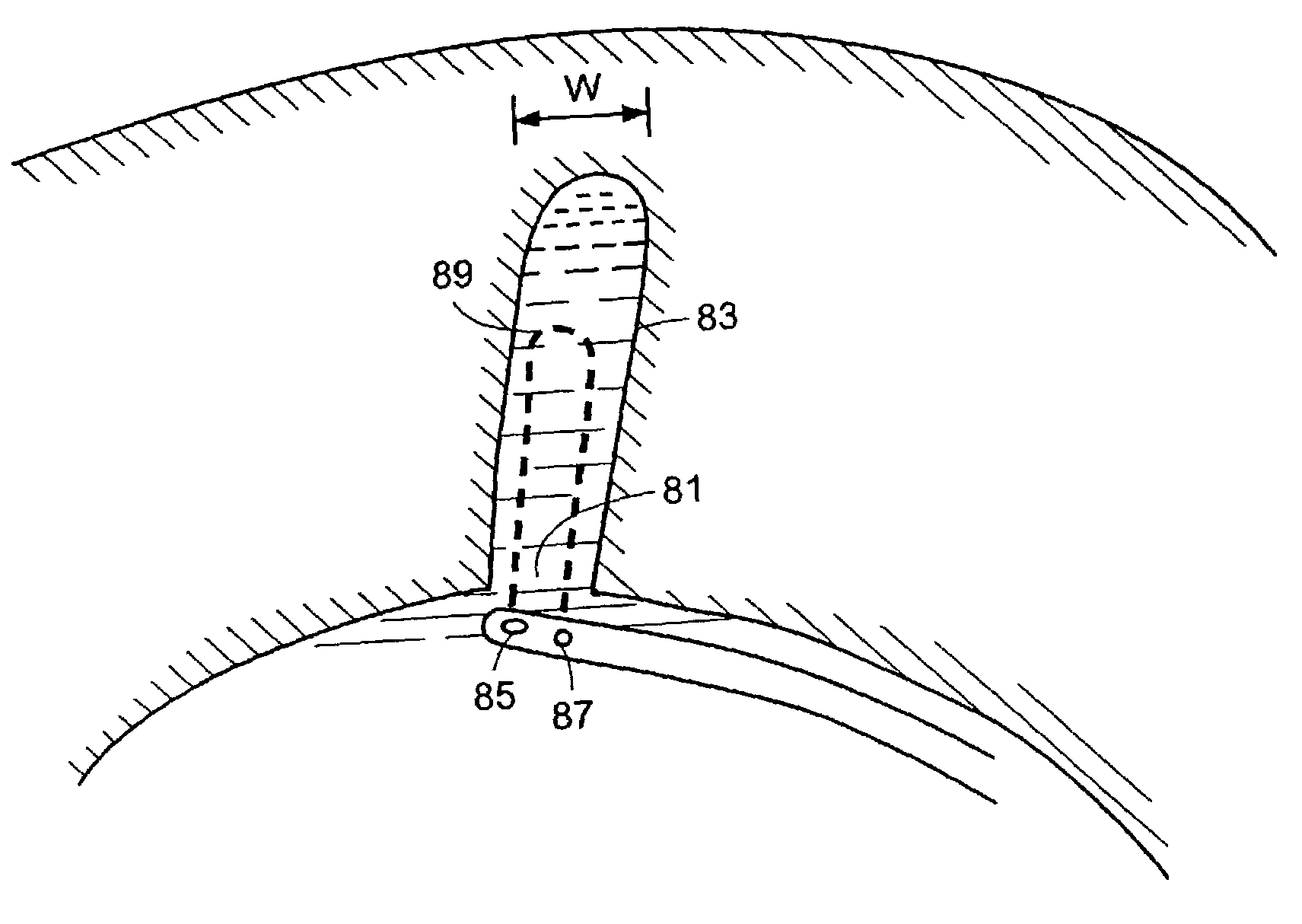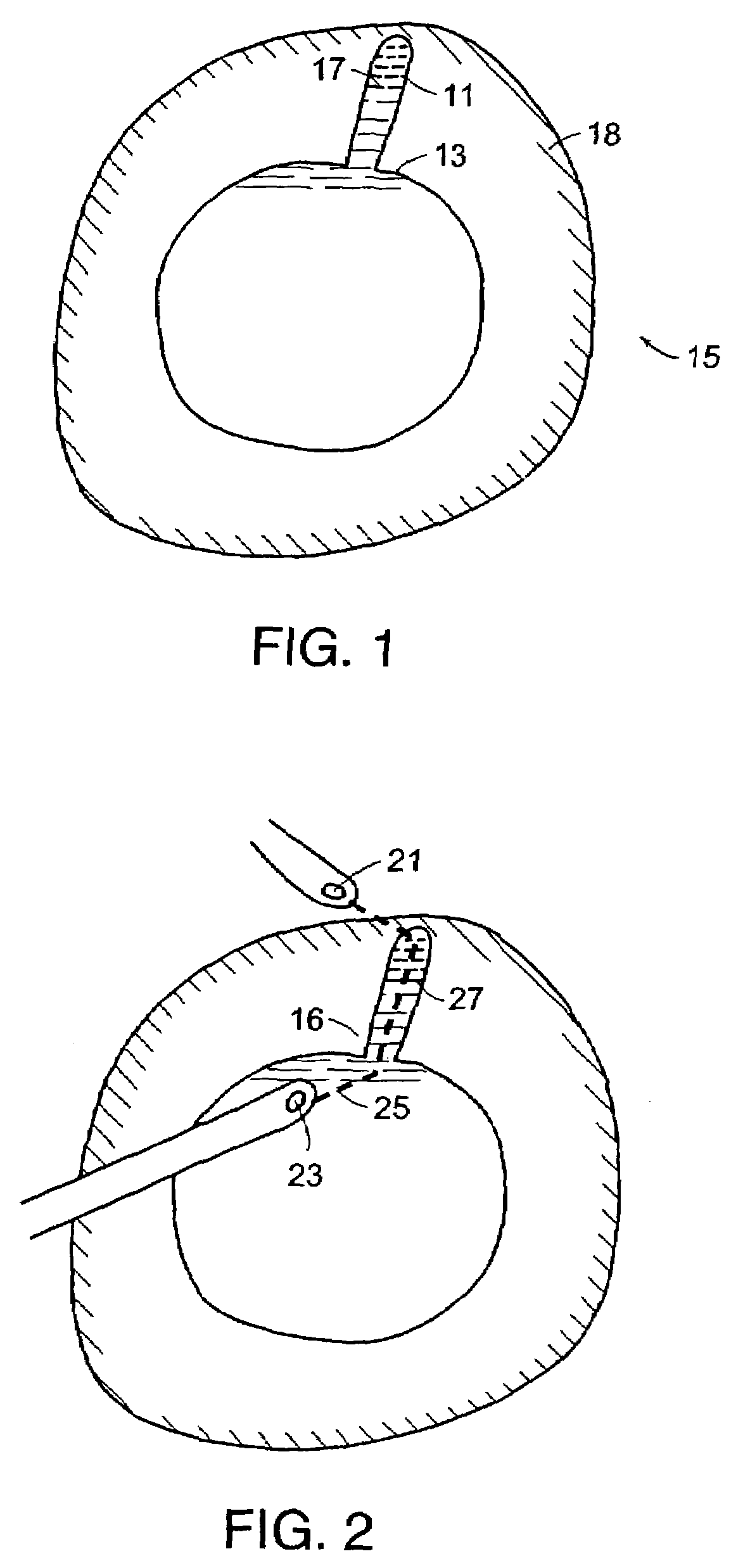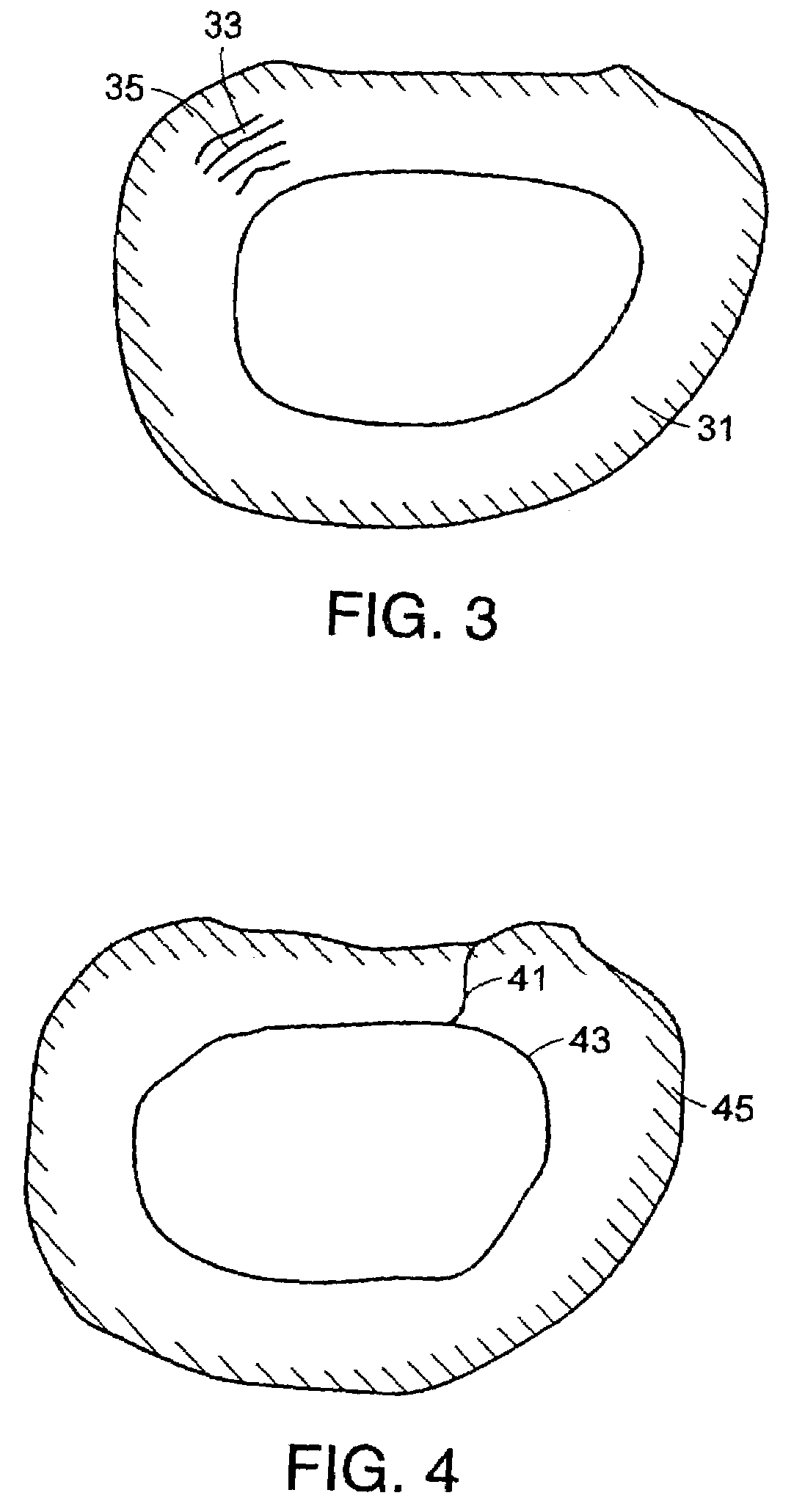Thermal coagulation using hyperconductive fluids
- Summary
- Abstract
- Description
- Claims
- Application Information
AI Technical Summary
Benefits of technology
Problems solved by technology
Method used
Image
Examples
example i
[0161]This example demonstrates the preferential heating of wounded areas of collagen tissue infused with hypertonic saline over uninfused wounded areas.
[0162]Bovine meniscus tissue (a collagen based tissue similar to the collagen in the annulus fibrosus) was obtained and cut into thin strips having a thickness of about 0.8 cm. Two electrode-containing 18 gage needles 201, 202 were placed, inserted into the tissue in a parallel manner about 3 mm below the surface of the tissue to produce a bipolar electrode arrangement.
[0163]Small stabs having a diameter of about 1.0 mm and a depth of about 2.0 mm were made into the tissue with an 18 gage hypodermic needle. These stabs (or “wounds”) were made to simulate fissures on the inner wall of an annulus fibrosus. About 1 cc of HCF was then infused into the stabs with a 20 gage needle. Excess HCF appearing on the surface of the tissue was removed.
[0164]Now referring to FIG. 20, two microthermocouples (T1 and T2) were placed about 2 mm below t...
example ii
[0168]This example demonstrates the preferential heating of wounded areas of collagen tissue infused with hypertonic saline over wounded areas infused with normal saline.
[0169]The procedure for this example was substantially similar to that of Example I, except that the wound at the T2 site was infused with isotonic saline (0.9% NaCl).
[0170]FIG. 22 reports the temperature at sites T1 and T2 as a function of treatment time for this example. As clearly shown by this Figure, the wound infused with HCF was again able to be heated to over 45° C. after only about 50 seconds, and about 50° C. after only about 70 seconds. In contrast, the T2 site infused with isotonic saline was able to be heated to less than about 30° C. after about 50 seconds, and only about 35° C. after about 70 seconds.
[0171]It is noted that the temperature rise provided by isotonic saline in this example (about 33° C. at 50 seconds) is only a marginal improvement over the temperature rise experienced at the uninfused s...
PUM
 Login to View More
Login to View More Abstract
Description
Claims
Application Information
 Login to View More
Login to View More - R&D
- Intellectual Property
- Life Sciences
- Materials
- Tech Scout
- Unparalleled Data Quality
- Higher Quality Content
- 60% Fewer Hallucinations
Browse by: Latest US Patents, China's latest patents, Technical Efficacy Thesaurus, Application Domain, Technology Topic, Popular Technical Reports.
© 2025 PatSnap. All rights reserved.Legal|Privacy policy|Modern Slavery Act Transparency Statement|Sitemap|About US| Contact US: help@patsnap.com



